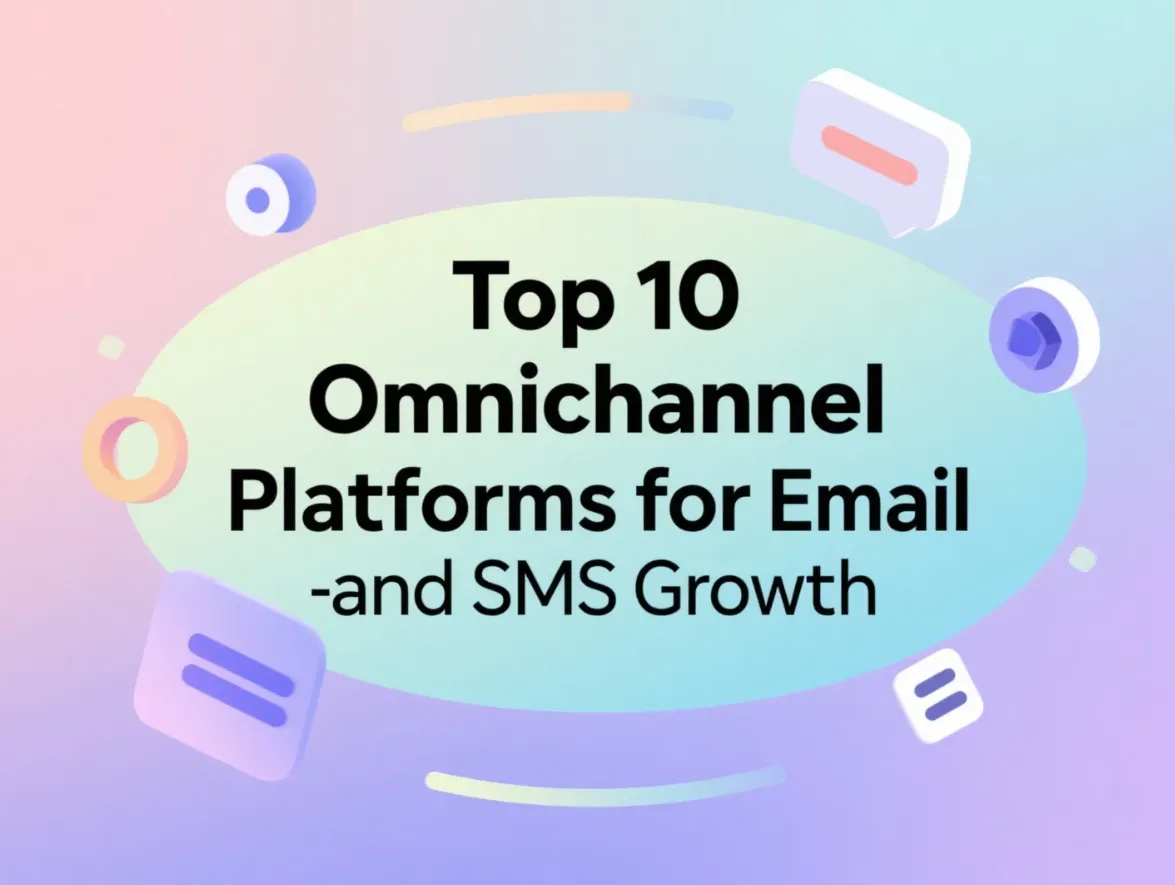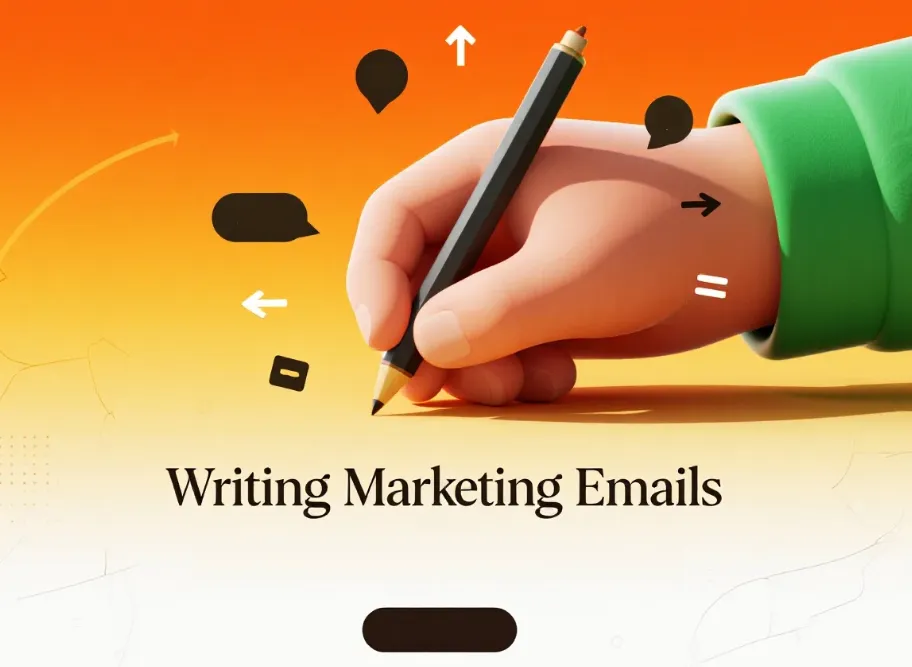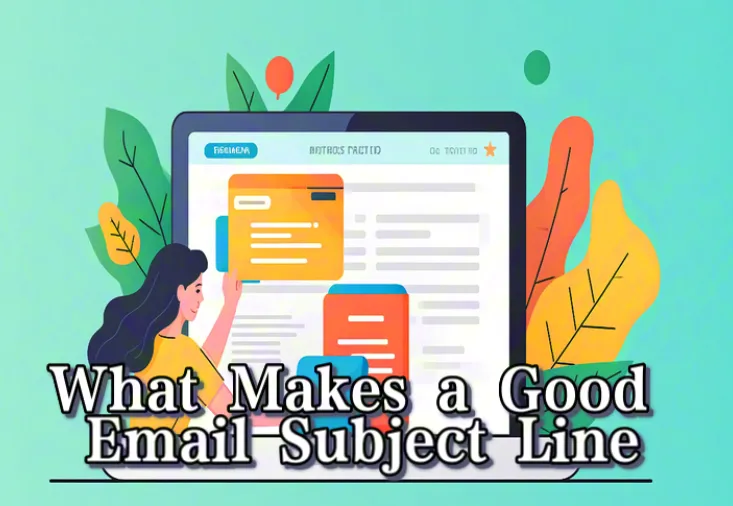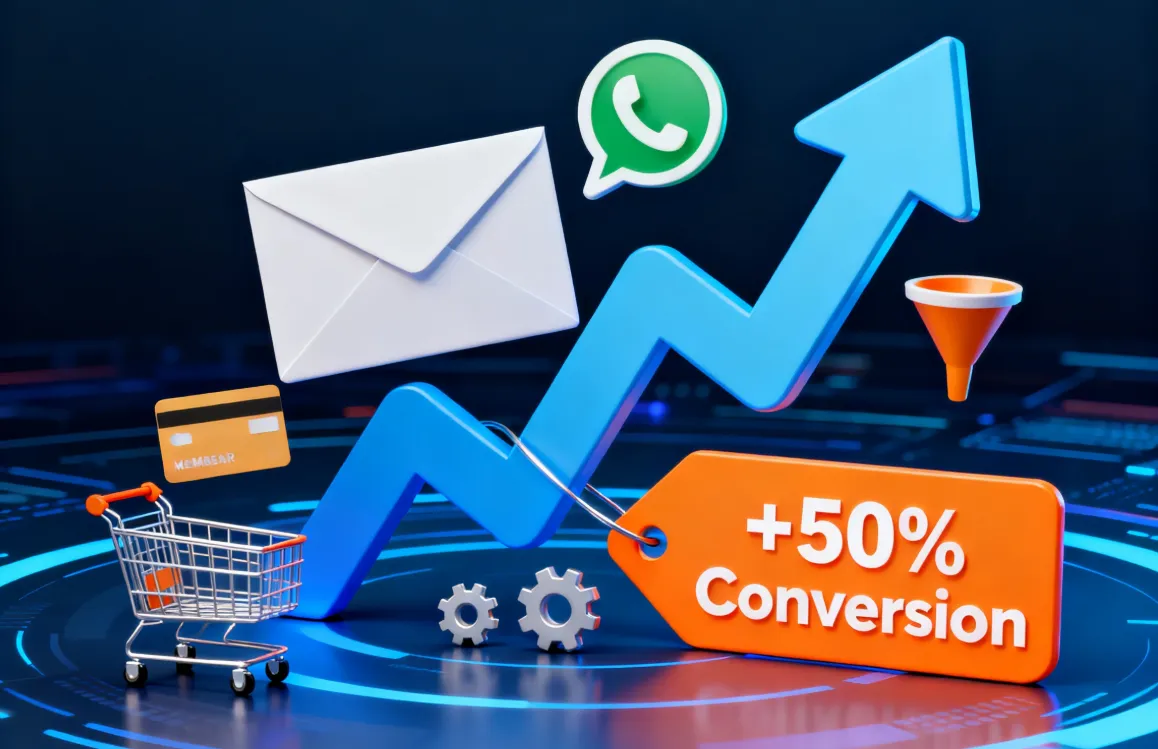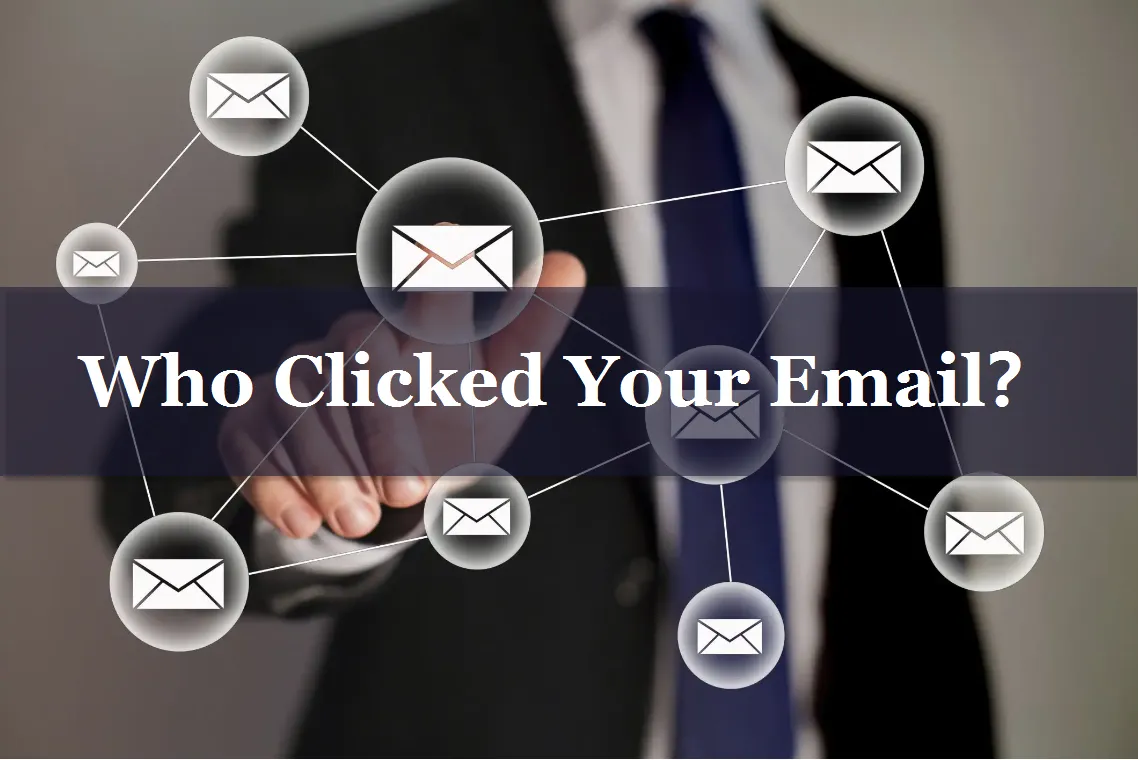Have you ever found yourself staring at a blank screen, trying to create the best promotional email? You spend hours trying to choose fonts, lay out pictures, and colors. In two weeks, you will start a new campaign. Sound familiar?
With billions of messages sent each day, the global number of email users has reached 4.6 billion , and it's still growing, with more expected by 2025. The process of developing them separately is time-consuming and yields inconsistent outcomes. Email template design addresses this dilemma by offering reusable templates that keep your brand alive and dramatically limit production time.
We guide you through everything about email templates: what they are, which types suit different situations, and a handy 5-step guide on how to use them to give your campaign a boost. Whether you are a small business owner, marketing manager, or just beginning with email campaigns, you will find that the correct template can transform your email marketing strategy.
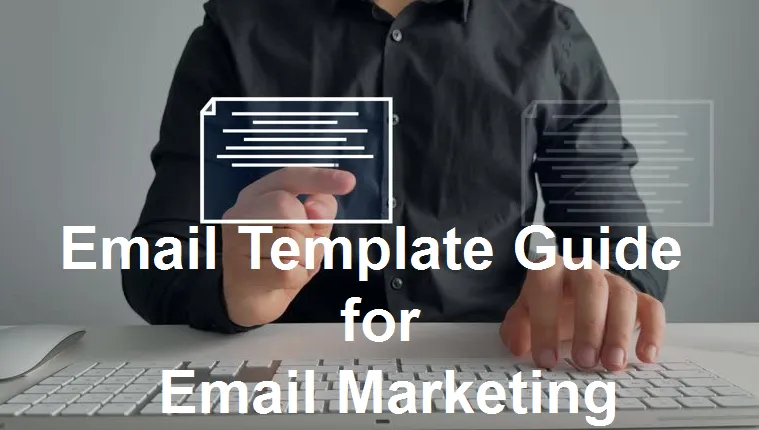
What Are Email Templates?
Email templates are pre-built, designed layouts that you tailor to specific messages rather than creating an email from scratch. Imagine them as architectural work plans; the framework, design features, and formatting guidelines remain the same as you replace campaign-related headlines, images, and offers. These frameworks support three critical aspects in all communications: visual identity (the colors, fonts, and position of intro), structural consistency (location of elements), and formatting standards (space, size, and hierarchy). One of your staff members can develop an on-brand message without other design choices that may contradict your preferred style.
3 Main Categories of Responsive Email Templates
-
1
Marketing Templates
Marketing Templates deal with promotions, newsletters, new products, and sales during a particular season; anything intended to promote interaction or purchases. These focus more on visual, clear calls-to-action and persuasive messages that guide your recipients through your sales funnel.2Transactional Templates
Transactional Templates are automated messages that you can send due to customer activities: order confirmations, shipping updates, password resets, and account notifications. These elements provide clarity, deliver important information, and develop trust through a professional presentation.-
3
Internal Communication Templates
Internal Communication Templates structure team updates, project notifications, meeting invitations, and employee announcements. These emphasize readability, information hierarchy, and professional formatting, which keep your internal communications organized.
Platforms like Aurora SendCloud offer libraries with over 100 free email templates you can customize immediately.
These eliminate the technical work of building responsive layouts while giving you starting points that already follow design best practices. Rather than wrestling with HTML or wondering about mobile optimization, you adapt proven templates to your specific needs, which improve email efficiency.
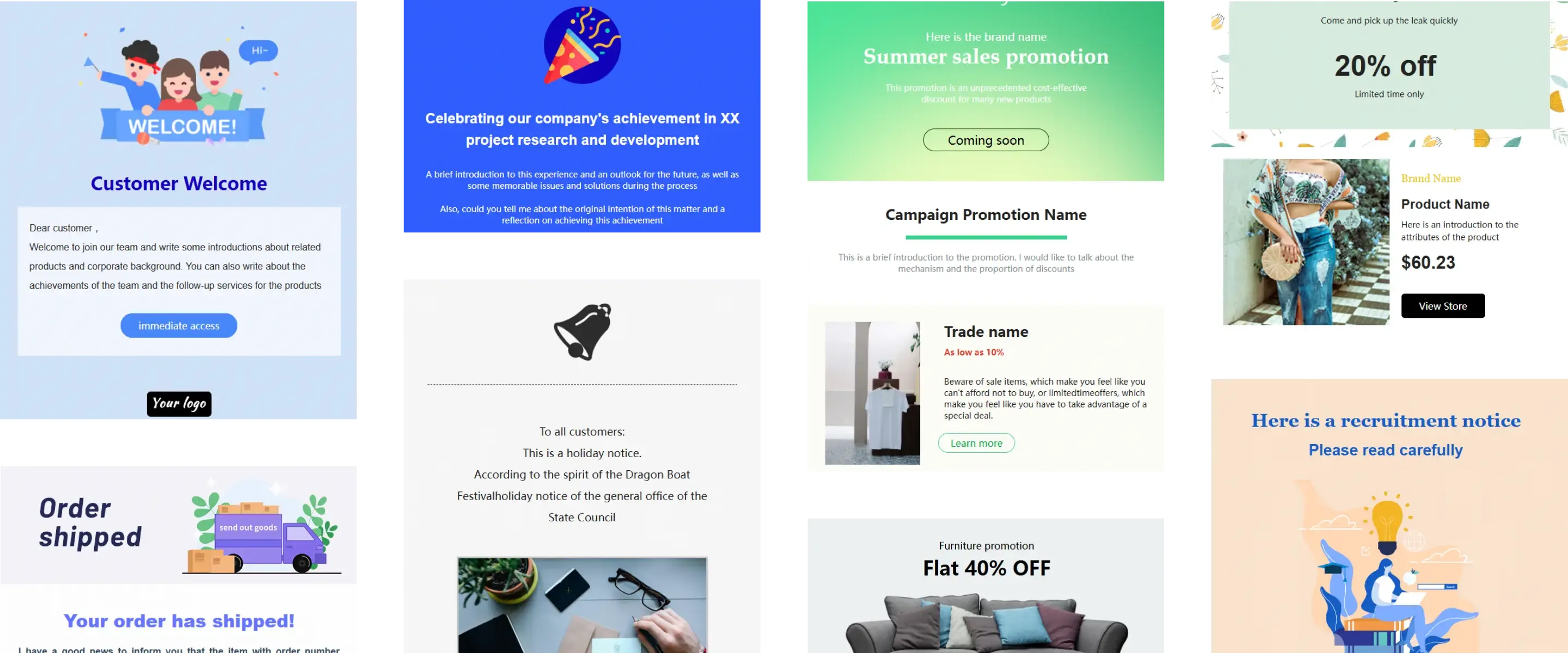
What Makes a "Good" Email Template?
Strong templates share specific traits that weak ones lack. Understanding these characteristics helps you evaluate existing options and create better ones for your campaigns.
- Structure That Flows Naturally: Before your audience loses interest, put the most essential information first, followed by supporting facts, and finally by your call to action. A clear structure allows readers to navigate easily through the information without having to look for key points.
- Designed for Mobile: Over 40% of emails are opened on smartphones, thus your template must adapt. Text should be readable, buttons should be simple to press, and pictures should resize well. A single-column style also eliminates awkward side scrolling.
- Easy to Scan: Use clear headers, subheadings, and white space to help readers understand the material quickly. The use of bold CTAs and well-organized sections facilitates speedy scanning.
- Consistent Branding: Keep your colors, font sizes, and logo positioning consistent. Consistency creates trust and allows customers to quickly identify your brand in their email.
- Built for Everyone: Good templates provide accessibility basics, strong color contrast, alt text for images, clean HTML, and readable font sizes. These minor details make emails easier to read.
The 5-Step Guide to Creating Effective Email Templates
It takes more than designing attractive email templates to create high-performing ones. This tested framework takes you through the necessary steps involved to identify email design best practices .
Step 1: Identify Your Email Goals and Use Cases
Start by listing every message the business sends. Get specific about purposes rather than designing vague, catch-all templates. A beauty retailer might need: welcome series, abandoned cart recovery (three timing variations), post-purchase thank-yous, review requests, seasonal sales, product launches, loyalty updates, and re-engagement campaigns. Map each template to customer journey stages. Sephora's abandoned cart template series sends three messages: one hour later, highlighting abandoned products, 24 hours later, adding customer reviews, and 72 hours later, offering a time-limited discount. This recovers approximately 15% of abandoned purchases. Document all use cases to ensure your template library supports your entire email program.
Step 2: Choose the Right Template Structure
Match your layout to your content type and campaign goals.
- Single-column layouts work best for mobile-heavy audiences and narrative content. Multi-column layouts suit product showcases but must collapse properly on mobile. Inverted pyramid structures place your value proposition and CTA early, ideal for promotional campaigns.
-
Overly Complex Designs
New templates often try to impress with too many elements or colors, which ends up confusing the reader. Keep things simple: use 3-4 colors, one main call-to-action, and a clean layout. Too much complexity can hurt your message and conversions. -
Inconsistent Branding
When templates aren’t designed with a unified brand style, they can confuse your audience. Stick to consistent colors, logos, and fonts to build trust and make your emails instantly recognizable. -
Templates vs. Personalized Content
Templates are just a structure, not the actual content. Don’t treat them as a one-size-fits-all solution; make sure to personalize your emails based on your audience’s needs and preferences. Personalization is key to creating a meaningful connection. -
Neglecting Mobile Optimization
Most emails are opened on mobile devices, so make sure your templates look good and work well on smaller screens. Always design with mobile in mind or test for mobile responsiveness during development. -
Ignoring Load Time
Heavy images and large files can slow down email load times, especially on mobile. Compress your photos, use the right file formats, and keep the email size under 102KB to prevent clipping in Gmail. -
Skipping Testing
6.Don’t skip testing your templates. Always check how they look across different devices, email clients, and screen sizes. Make sure links work, images load correctly, and everything looks good on mobile.
Wayfair restructured its promotional templates using Z-pattern layouts. Their logo and sale announcement sit top-left, the hero image showcases furniture diagonally across the middle, product grids appear below, and the CTA button lands in the lower right. This increased click-through rates by 23% compared to their previous linear design.
Keep content width between 600 and 640 pixels. Add 20-30 pixels of padding around content blocks. Use clear section headings for quick scanning.
Step 3: Design for Visual Appeal and Usability
Apply your brand colors systematically, using primary for key elements and CTAs, secondary colors for accents. Use brand-approved fonts with web-safe fallbacks. Keep your logo in the same spot, typically the header. White space improves readability. Give headlines breathing room, separate sections visibly, and surround CTAs with space. Set line spacing at 1.4-1.6 for comfortable reading. Fashion retailer ASOS enlarged CTA buttons from 38px to 48px height, increased padding by 30%, and adjusted line height from 1.3 to 1.5. These changes drove a 31% increase in click-through rates and 19% improvement in mobile conversions. Follow the 60/40 rule: 60% text and 40% images. This works well with spam filters while maintaining visual interest. Use action-oriented button copy like "Shop Now" or "Claim Your Discount" instead of vague phrases.
Step 4: Implement Responsive and Accessible Design
Use fluid layouts that adapt to screen width through percentage-based sizing. Media queries adjust styling for different devices. Make images scalable. Test across Gmail, Outlook, Apple Mail, and Yahoo on desktop and mobile.
Maintain a 4.5:1 contrast ratio for body text and a 3:1 contrast ratio for large text. Write descriptive alt text for every image. Use semantic HTML with proper heading hierarchy (H1, H2, H3). Keep body text at 15px minimum.
Birchbox increased body text from 13px to 15px, improved contrast ratios from 3.2:1 to 4.8:1, added comprehensive alt text, and ensured 44px minimum touch targets. They switched to single-column mobile layouts. These changes achieved 94% WCAG AA compliance while boosting engagement by 12% overall and 27% among users with accessibility needs.
Test on actual devices, not just emulators. Check how templates look with images disabled—preview in dark mode.
Step 5: Establish a Template Management System
Document each template in a centralized location. Specify intended use cases, which elements can be customized versus fixed brand components, character limits, image specifications, and required versus optional content blocks.
HubSpot created a centralized library with 45 templates, each tagged by campaign type with detailed guidelines and performance benchmarks. They implemented version control, established quarterly reviews, and conducted monthly training sessions for their 30-person marketing team. This cut email creation time by 47%, reduced brand inconsistencies by 78%, and improved engagement rates by 21% year-over-year.
Schedule quarterly template reviews, examining metrics, and gathering team feedback. Monitor design trends and technical requirements. Train team members through structured onboarding and provide quick-reference guides—Designate template "owners" for each category.
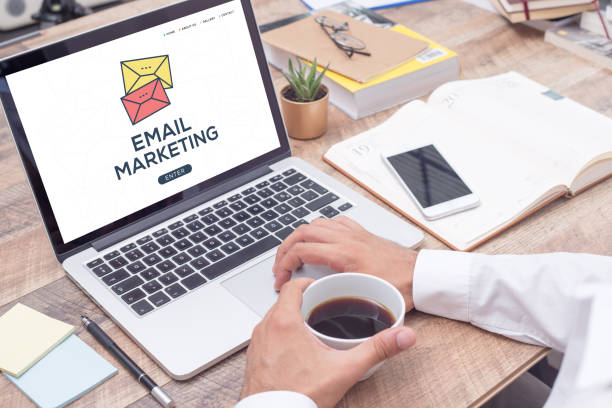
Common Beginner Mistakes to Avoid
Understanding frequent pitfalls helps you create more effective templates from the start and avoid wasting time on approaches that don't work.
Last Say
Using email templates is one of the top email marketing best practices. The best email template tools help you create campaigns that are faster to produce, more consistent in branding, and more effective overall. With average open rates over 26% and an ROI as high as $42 for every dollar spent, email remains one of the most valuable tools in modern marketing.
By setting clear goals, choosing the proper structure, designing for usability, and keeping templates organized, you can boost performance without extra effort. Unlock your brand's potential by refining your email templates! Whether using pre-built designs or creating your own, step-by-step improvement strengthens your brand, saves time, and delivers lasting results. Start optimizing today and watch your brand shine!


